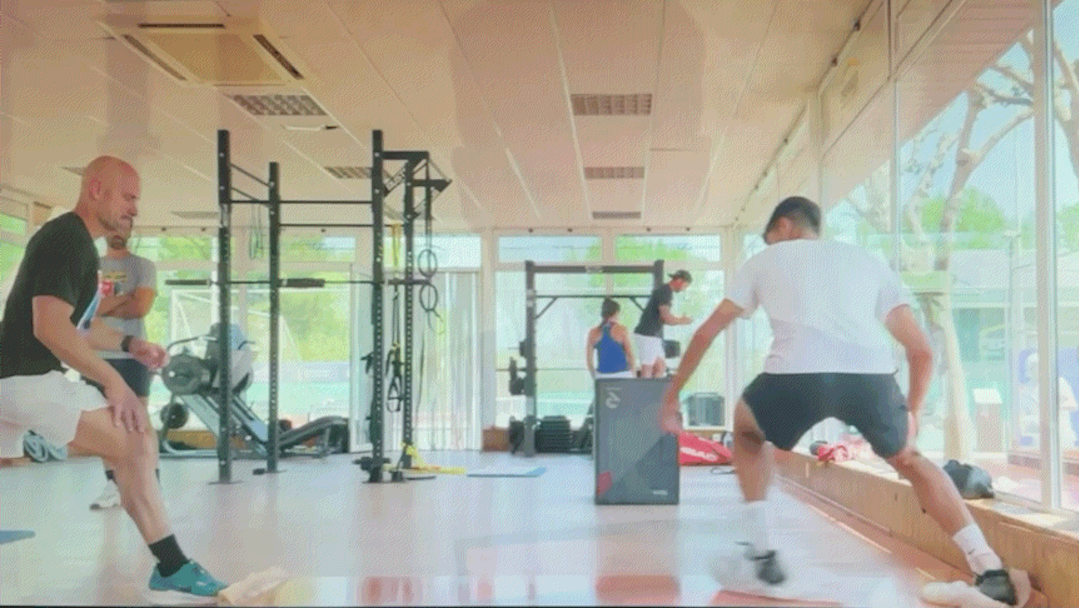For most of the past year, this site has been overthinking the exercise and training techniques that have made brief cameo appearances during the Netflix docuseries Break Point. The premise underpinning this series is that all tennis players can benefit from studying what the pros do to prepare for and recover from matches. The final exercise from Season 1, Episode 4 of the show, is also somewhat of a mystery.
Ons Jabeur was briefly seen performing a pulling exercise using a “superband” on the show. First, the easy part. A superband is a closed-loop resistance apparatus used for fitness and strength training. These devices do not have any handles, so the athlete grips the band directly. That simplicity is what makes superbands so versatile.
My first thought was that Jabeur was performing a “Face Pull.” That exercise is commonly used in strength training and bodybuilding to target the upper back and rear shoulder muscles. The proper form for a Face Pull is pulling a resistance band attached to a high point towards the face while keeping the upper arms parallel to the ground. However, Jabeur’s pulls are coming in directly below her chin.
If Jabeur had been pulling the resistance band to her chest, that would make the exercise a resistance band chest row. That exercise also targets the muscles of the upper back, particularly the rhomboids and middle trapezius. However, her hands are coming in much too high for a chest row.
After much deliberation, I decided that Jabeur was most likely performing a modified Face Pull. One argument against pulling the superband directly toward the face is the risk of eye injury if the band snaps. That would be a significant concern for a tennis player. Dropping the draw point to the chin lowers the risk of impact to the eyes if the band suddenly breaks. Another alternative to mitigate that risk would be wearing safety glasses when performing this exercise.
Tennis involves repetitive overhead movements, such as serving and overhead shots. These actions can place significant stress on the shoulder joints. Face pulls target the upper back and rear shoulder muscles. That promotes balanced development and helps counteract the forward shoulder position common in many overhead sports. Face Pulls can contribute to better shoulder health and reduce the risk of overuse injuries.
Superbands are great for tennis players, as they integrate well with strength training, agility drills, and dynamic warm-up routines that are ubiquitous to the sport. These resistance training devices support functional movement patterns relevant to tennis. Superbands are lightweight and can be easily carried in a racquet bag.
If you aren’t already training with superbands, perhaps now is the time to add this versatile piece of equipment to your arsenal.
Fiend At Court participates in the Amazon associates program and receives a paid commission on any purchases made via the links in this article. Details on the disposition of proceeds are available on the “About Fiend at Court” page.



